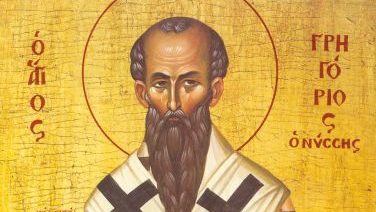St. Gregory of Nyssa was born into an extremely religious family. His mother Emmelia was the daughter of a martyr. Gregory and two of his brothers, Basil of Caesarea and Peter of Sebaste became bishops. And his oldest sister St. Macrina was known as a model of piety.
At some point, it appears that Gregory was married — in a letter from Gregory of Nazianzen, the saint offers condolences on the loss of a woman, Theosebeia, who is believed to be his wife. Gregory of Nazianzen also reports that Basil performed Gregory of Nyssa’s episcopal consecration around 371.
Once he became bishop, Gregory faced many problems. Demosthenes, the governor of Pontus, ordered the Bishop of Nyssa be seized and brought before him. He was deposed in 376 at the Synod of Nyssa, and forced to wander from town to town until Emperor Valens died in 378.
The new emperor, Gratian, brought tolerance for Christianity, and Gregory was able to return to his see. In 379, he assisted at the Council of Antioch, which dealt with the Meletian schism. Gregory also fought against the heresies of Arianism and Pneumatism in the East, and it is believed that he was present at the Council of Constantinople in 383.
St. Gregory disappeared from history between the years 385 and 386, but he left behind a vast number of theological writings.

